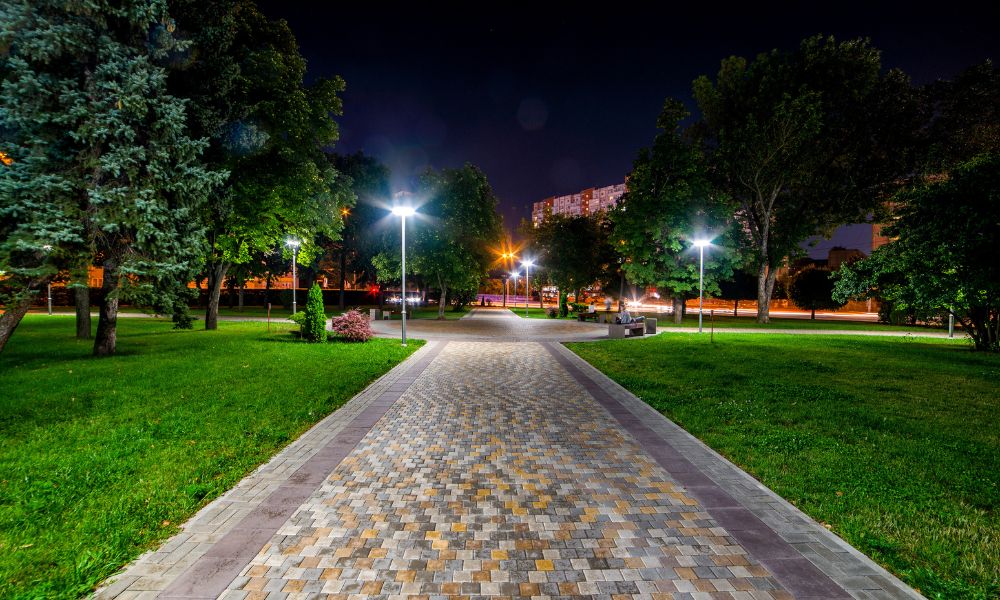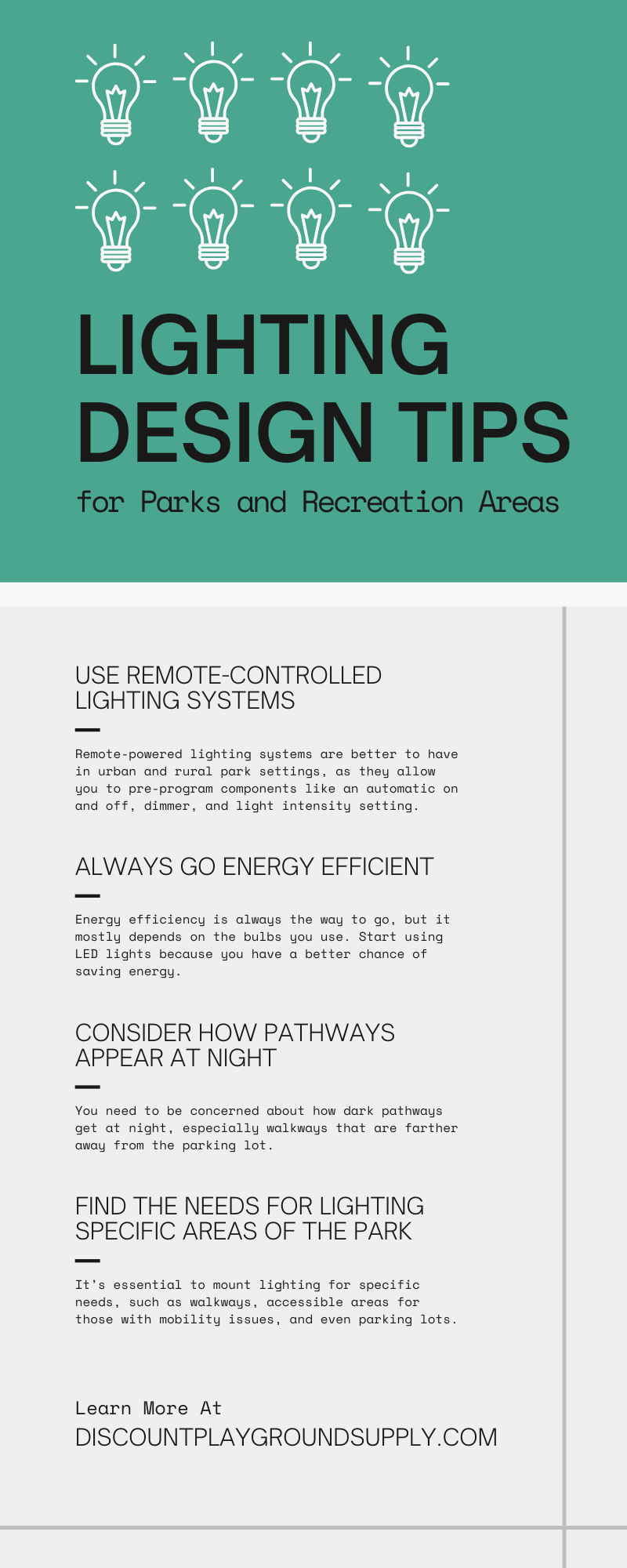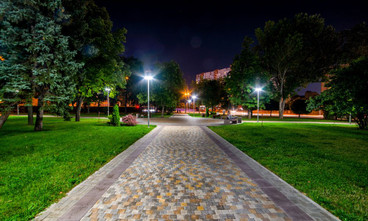
Parks and recreational areas can be fun places to be and spend time with friends and family. Although these places are fun for entertainment, they aren’t consistently safe at night. In order to improve outdoor areas, you need the right guide. Here’s a look at lighting design tips for parks and recreation areas.
Why Is Lighting Important in the Park?
Many believe lighting is just lighting, that anyone can put in lights, but that’s only a minuscule amount of the reason lighting’s essential to a park. Lighting is the biggest part of your design, as it can shift the ambiance of every park area.
Darker lighting creates an ominous tone, whereas warm fluorescents give off less glare and more light to guide guests to and from the parking lot, play area, or recreation zone. When thinking about lighting, you need to understand that this is the element that can determine if an area feels safe to walk in.
Since the park’s an ample space, you need enough lighting to light pathways and make it easier to see at night. It’s also a good idea to have better lighting that would allow emergency service workers and security guards to see and move around to get to an emergency faster.
What To Consider When Installing Lighting
You can add any type of lighting to a park, but every place needs an appropriate style, such as long pole lights for parking lots that have lights on both sides of the pole. The light placement can help elevate the park’s safety precautions, even during late-night events. Here are the things to strongly consider when placing lighting in recreational areas.
Decide if You’re Designing a New Part of the Park or Refurbishing
Not every park designer will have the same goals. You might be interested in expanding the park, but you need a way to install new lighting to make the area accessible and safer to be in, especially in the evening.
Start by laying out the blueprints for your refurbished or new section design. Innovative ideas always begin with an illustrated rough draft. It helps to work with an architect to develop your designs further and decide what lighting works for that area.
Find Out the Purpose of Each Play Zone
After you’ve orchestrated a design, consider its purpose. Play zones, fitness centers, and recreational areas have a use, so what makes this new or refurbished place different? If it’s a recreational space, you may choose a soccer field. A soccer field requires lots of lighting, but it needs to be bright enough for players to see the goalposts and for the audience to enter and exit the stands.
For the soccer field, your focus should be on these critical areas so spectators, players, coaches, and others can see and move around safely:
- Light uniformity
- Fluorescent glare
- Color rendering
How Many People Can Fit in This Space?
How many people a space can hold is just as essential as the purpose. The number of people your facility holds determines how much lighting you need. Whether the space includes a big stadium or a small field, it should have adequate lighting available so guests watching games can see and move around.
Space out the lights, so they sit comfortably between bleachers, goalposts on the field, and the perimeter of the recreational area. When you have enough lighting, you worry less about whether an area is safe to walk through.
Tips for Designing Lighting in the Park and Recreation Areas
The next phase is deciding how to design the park and recreation areas. You want to ensure you do enough for each area. Before you get started, you should follow these lighting design tips for parks and recreation areas.
Use Remote-Controlled Lighting Systems
Many lighting systems have sensors that turn off automatically or use solar energy to power on in the evening. Remote-powered lighting systems are better to have in urban and rural park settings, as they allow you to pre-program components like an automatic on and off, dimmer, and light intensity setting.
Choosing a system that lets you pre-program automation systems is better than buying something you’d need to manually change every day. Choose automated devices because they’re simple to use and don’t require too much work to do to get the system set up.
Always Go Energy Efficient
Energy efficiency is always the way to go, but it mostly depends on the bulbs you use. Start using LED lights because you have a better chance of saving energy. While the light shines bright, the light bulbs consume less power.
Also, LEDs are perfect for outdoor events. Since so many residents visit the park at night for events, the lights can adjust to the setting. For example, at a football game, the intensity of the stadium lights is high, while parking lots typically have lower-intensity lights.
Consider How Pathways Appear at Night
You need to be concerned about how dark pathways get at night, especially walkways that are farther away from the parking lot. This is largely a concern for safety, especially in areas with higher crime rates. Keep residents, park staff, and other guests safe by installing lights in hardly-lit areas, as well as near mostly wooded spots. Once more lighting is placed in the park and recreational spaces, crime rates plummet, and safety increases.
Find the Needs for Lighting Specific Areas of the Park
It’s essential to mount lighting for specific needs, such as walkways, accessible areas for those with mobility issues, and even parking lots. Parking lots receive much activity—people getting in and out of their cars, others cutting through parking lots to get to other places, and even crime.
You can do your part by designating a generous portion of your park’s design to lighting. Unlike playgrounds and sporting spaces, parking lots get used the most. The parking lots are considered a high-activity zone, so ensure the proper lighting is placed here and near entrances and exits before installing lights anywhere else.
The park’s an exciting place to be during the day and receives plenty of activity at night. Get the best advice on how to incorporate lighting design in your park while browsing commercial playsets from Discount Playground Supply. We’re here to help build a better, safer park for everyone in the community to enjoy.


